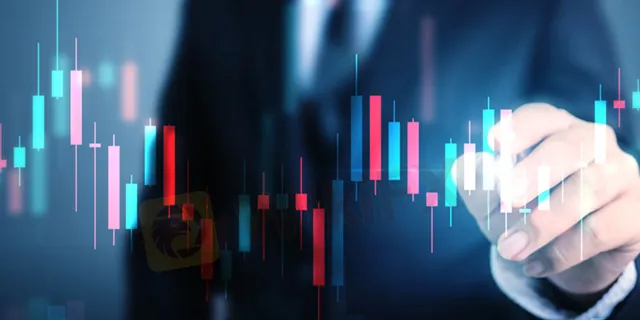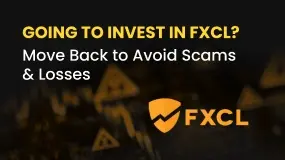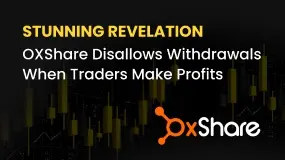Abstract:Have you ever encountered that there are times when the currency pairs' price go up and down and change very fast?

That involves in the term “Volatility”. Volatility measures the overall price fluctuations over a certain time. When the forex market becomes choppy, you usually should not trade, otherwise you will lose all your money, or you should use much stricter guidelines for entering and managing your trades.
In this article, we will introduce what volatility means in forex market, what causes it and how to trade during the volatile period.
What is Volatility Market?
Sometimes, we also use choppy market to refer to volatile market. A simple truth of trading is that markets are often moving sideways, neither trending up or down. The term is derived from the phrase choppy seas, where a boat will move a lot but not over any large distance as waves prevent it from moving any meaningful distance. In forex, choppy markets are those which have no clear direction such as a sideways market (not a nice clean ranging market), but a really churned up mess which make traders lose sleep at night. This is where previous gains can be quickly wiped out and its a deeply frustrating and demoralizing experience.
A choppy market refers to a market condition where prices swing up and down considerably, either in the short term, or for an extended period of time.
What Causes A Choppy Forex Market?
A choppy forex market occurs when both of the currencies in a particular pair are strong, or both weak, at the same time. This creates a “tug of war” of up and down, choppy movements. The other possibility is that neither currency is moving at all, both currencies are consolidating. If both currencies in a pair are strong or weak at the same time it creates a tug of war that causes sideways, choppy movements. If you see a market with a large number of choppy pairs or groups of pairs across several currencies at the same time, this can cause the entire market to stall and go sideways.
Sometimes the market can become choppy and go sideways for 1 to 2 days ahead of important news drivers. For example, if the USD has interest rate news pending in two days, sometimes the market stalls and goes sideways in advance of the news, awaiting the outcome of the news. The USD is the most liquid currency with the highest trading volume and sometimes acts as a bellweather for the forex market. When other currencies have important news pending, the currency pairs including those currencies can also go sideways and become choppy. For example, the NZD pairs might go sideways and become choppy ahead of an interest rate news driver for this currency.
A choppy forex market can be identified with multiple time frame analysis. You can set up all 28 pairs, grouped by individual currency, then analyze the market daily using multiple time frame analysis and our forex market analysis spreadsheet. If you understand the condition of the market before entering any trades, then your odds of making great, trend based trades goes up substantially. Looking at one pair is not enough. Some traders think that if the EUR/USD is choppy, the whole market is choppy. That is not the case.
Implied Volatility
If we want to dig deeper into more specific price fluctuations regarding a particular market, it is worth looking at implied and realised volatility. The former represents the current market pricing based on its expectation for movement over a certain period of time. This forward-looking figure allows a trader to calculate how volatile the market will be going forward; for instance, the implied move and range for a currency pair with a significant degree of confidence. This is extremely useful for calculating stop distances and position size.
Realised Volatility
This is the actual movement in prices that takes place over a defined historical period. Technical analysis indicators like the Average True Range (ATR) and Bollinger Bands can help us to define this. The ATR shows how much an asset moves on average during a given time frame. A falling ATR signals narrow price ranges, therefore volatility is decreasing. A rising ATR points to growing volatility.
Bollinger Bands depict rising and falling volatility. They act like dynamic support and resistance levels and can signal overbought or oversold conditions. The bands widen when volatility increases, and narrow when volatility falls.
How to Trade Volatility in Forex Trading?
When you trade volatility, you take a view on the future stability of a currency pairs' value. Instead of trading on the price either rising or falling, you're predicting whether or not it will see movement-in any direction.
Volatility trading is particularly valuable when world events are driving markets to spike or move erratically. If you're expecting a significant market reaction, but youre unsure which way it will go, volatility trading enables you to take a position-and to profit if your forecast is correct.
Volatility traders frequently take positions on markets that are derivatives of other underlying markets.
1. Develop a low-time frame strategy
Trading on a low-time frame setup usually entails making faster decisions, and since speed is key, you want a strategy that satisfies the low time frame trend. For example, a simple “W” bottom or “M” top pattern strategy can yield those crucial 1-3% moves.
2. Price action is king
A problem with trading sideways markets on lower time-frames is that theres often a fair amount of noise from the choppy market, with many wicks and fake-outs to either side–you can't control the market, but you can control your trades, so discipline and entry criteria are important. Not only that, but in choppy markets, you'll find that many indicators (although not all) will often lag, producing untradeable noise or put you in the correct trade too early, or the right trade too late. This is why simply observing price action without wholly relying on indicators will produce better tradeable setups.
3. Speed is key
Since we're trying to trade a sideways market, our trades move to lower time-frames(15-Minute/1-Hour) in order to find some tradeable setups that don't chop us out of the market. The aim of any low-time frame strategy in a choppy market is speed—you want to be in and out of the market quickly, but just long enough to make your 2-5% for the day.
4. ABC- Always Be Closing
To trade on lower time frames might make a profitable trade seem like it's going to go up forever or go down forever, but the aim is to always be in and out of a trade, and you need the discipline to enter based on rules, take profits and take losses—this is not trying to catch the bottom or sell the top, but catch the moves in between.
5. Don't forget the larger trend
As we enter into a prolonged sideways market, don't forget to observe the higher time frames in order to filter that bias into your low-time frame trading.














